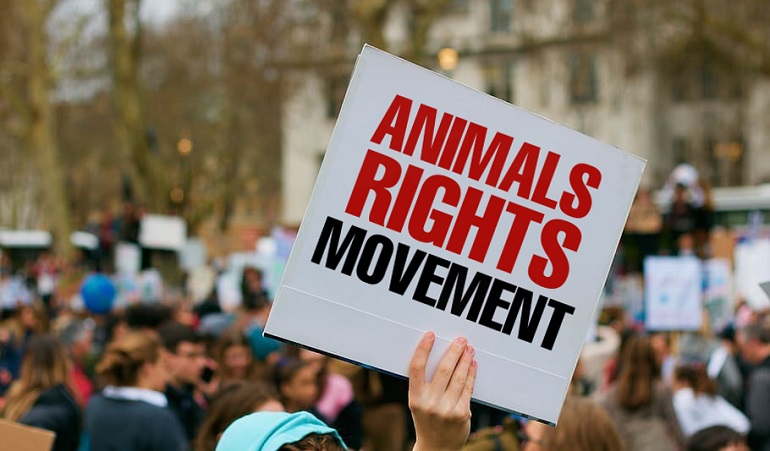In contemporary society, the discourse surrounding rights and ethics frequently oscillates between the protection of animal rights and the safeguarding of children’s rights. This parallels a tug of war, where the stakes often spark fervent debate. Not only do these issues invoke deep emotional responses, but they also reveal substantial philosophical inquiries into the moral fabric that binds our existence. The question arises: can we champion both causes simultaneously, or are we doomed to a dichotomy of values that leaves one side feeling marginalized?
To address this complex issue, it is essential to explore the foundations of animal rights and children’s rights, examining the ethical imperatives that underlie each movement. At the core of the animal rights movement is a belief in the inherent value of animals, advocating for their consideration as beings with interests, emotions, and a right to live free from suffering. This perspective often stems from philosophical doctrines, such as utilitarianism and rights theory. Conversely, the children’s rights movement, rooted in historical cultural and social evolution, emphasizes the vulnerability and developmental needs of children, advocating for their protection, education, and social welfare.
The conceptual overlap between these two arenas is evident, especially when considering the moral capacity of both groups. Animals and children, in many ways, share a status of defenselessness within social structures. Both are subject to exploitation, whether through systemic abuse in industrial farming or societal neglect in child welfare systems. Such parallels draw the attention of activists, highlighting the urgent need to raise awareness and foster compassion across these discourses.
Despite the similarities, the juxtaposition of animal rights and children’s rights engenders a unique moral landscape that warrants exploration. It challenges proponents of either cause to navigate the intricacies of ethical prioritization. For example, is it justifiable to prioritize the welfare of children over that of animals? Critics of the animal rights movement argue that children, as future custodians of society, should take precedence over non-human beings. This perspective often evokes passionate rebuttals from animal rights advocates, who contend that sentience should not dictate hierarchical value. The result is an ethically charged environment where fervent support for one cause can inadvertently diminish the other.
Moreover, psychological and sociological dimensions further complicate this discourse. Humanity’s anthropocentrism—an innate bias asserting human superiority over other species—plays a pivotal role in shaping our moral priorities. This phenomenon urges individuals to view children’s rights as synonymous with human achievement, often sidelining the voices of non-human beings. Consequently, advocates for animal rights frequently confront accusations of being misaligned with societal norms that inherently prioritize human existence.
However, the advocacy landscape is evolving. Contemporary activist movements are increasingly recognizing the interrelatedness of these causes. For instance, initiatives addressing ecological conservation often underscore the importance of nurturing both human and animal populations. Such campaigns emphasize a collective responsibility towards the planet’s biodiversity, which inherently supports children’s rights by ensuring a sustainable environment for future generations.
Recognizing the intersectionality of these rights reveals that supporting one does not necessitate the disparagement of the other. By fostering an inclusive dialogue, proponents of both movements can highlight shared values, such as compassion, empathy, and the overarching aesthetic of justice. Charitable organizations and activists are now focusing on collaborative efforts that advocate for systemic change, valuing both children’s well-being and the dignity of animals within a unified framework of ethical consideration.
The emotional landscape that defines our responses to these movements is compelling. The imagery associated with children in distress often provokes immediate sympathy, as do images of suffering animals. This emotional engagement is a powerful catalyst for action. Yet, it also invites scrutiny regarding the ethics of representation—the manner in which each group conveys the urgency of its plight shapes public perception and, by extension, engagement. As activists seek to evoke empathy, the risk of desensitization looms large; if the public becomes inundated with distressing narratives, it may become disengaged from both causes altogether.
Furthermore, societal infrastructure shapes these moral engagements. Legal frameworks, such as the Convention on the Rights of the Child, have established a global standard for children’s rights, providing a structured avenue for advocacy. In contrast, the realm of animal rights is still grappling with foundational legal recognition. While a patchwork of animal welfare legislations exists, a uniformly accepted framework analogous to that protecting children’s rights remains elusive. This disparity reinforces perceptions of moral hierarchy, positing human interests above those of animals and engendering a degree of moral dissonance.
In conclusion, the examination of animal rights versus children’s rights reveals a multifaceted moral tapestry where compassion, ethics, and societal values intersect. The engagement with each cause enriches the dialogue surrounding human values and ethical responsibility towards all sentient beings. As society progresses, it becomes increasingly critical to blend these narratives, dismantling the false dichotomy that often hampers effective advocacy. Ultimately, cultivating a holistic understanding of rights—one that intertwines the welfare of both animals and children—may pave the way for a more compassionate society, one where empathy extends across species boundaries and social structures alike.










